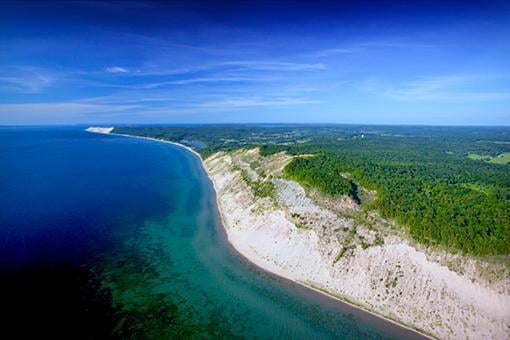Today, cannabis isn’t nearly as taboo as it used to be, even if there is still some stigma and stereotyping around its use—we’ve come a long way since prohibition and regular raids on secret crops in the Emerald Triangle and beyond. And not only has medical cannabis gained considerable popularity over time, but each year, more states are moving to legalize adult-use consumption in tandem with their current medical marijuana (MMJ) programs. This shift in cannabis is leaving many people wondering, “What’s the difference between medical and recreational cannabis, and why does anyone still have a med card when it’s legal anyway?”
Your state may have a robust MMJ program but still prohibits recreational consumption, or you may be one of the lucky ones who have access to both. Regardless, it’s valuable to understand the differences between medical and recreational cannabis and why many people in dual-legal areas still opt to get their MMJ card after adult-use is permitted.
What Is Cannabis?
Often referred to as marijuana, weed, pot, reefer, green, and a slew of other slang terms, the cannabis sativa plant has thousands of cultivars or “strains”—all of which produce unique flavors and effects.
Weed vs Hemp
Weed and hemp plants are sometimes interchangeably used with their scientific name: cannabis. However, in the US hemp is legally defined as containing 0.3% or less THC by dry weight and it became legal on a federal level in the US due to the passing of the 2018 Farm Bill—weed is still federally illegal.
Back in the 1700s, hemp plants were mainly used for industrial purposes to make fibers, like ropes and other textiles, including clothing, insulation, and even biofuel. Today, hemp plants are just as often bred to create CBD-dominant strains, or ones with higher potencies of other forms of THC, like THCa, but there is often less regulation of these products, even if they are considered federally legal and may be purchased by consumers 21 or older.
Understanding Cannabinoids: THC vs CBD
The cannabis plant itself contains more than 500 chemical compounds, including more than 100 that scientists call “phytocannabinoids” or just “cannabinoids.” Along with terpenes, the compounds that give cannabis its unique aromas and flavors, cannabinoids have differing effects. The two main cannabinoids found in cannabis are THC (tetrahydrocannabinol) and CBD (cannabidiol).
THC
THC is unique among the rest of the cannabinoids due to its being the most potent psychoactive compound that produces the classic weed “high” we know and love, thus imparting a range of mostly pleasurable and sometimes beneficial effects on the mind and body. Other effects include:
- Changes in perception and concentration
- Impaired short-term memory
- Altered sense of time
- Increased relaxation
- Increase in appetite
These effects will vary slightly from one type of strain to the next and are based on the potency and terpenes of that particular strain.
CBD
CBD is non-intoxicating but offers other advantages. Some commonly reported effects attributed to CBD include:
- Pain relief
- Sense of relaxation
- Anti-seizure properties
- Sense of mental calm
CBD can be an excellent option for those wanting the benefits of cannabis but without the mental buzz and intoxication.
What is Recreational Cannabis?
It’s important to note that cannabis laws vary from country to country and from one state or territory to the next. In the US, cannabis—whether medical or recreational—is still considered a controlled substance.
Recreational cannabis, in and of itself, isn’t much different from medical marijuana. It has the same mental and physical effects on the body, the most common being the “high” or euphoria caused by psychoactive THC, but it’s often preferred by people who are after social enjoyment or who smoke simply for their own personal satisfaction.
In most places where cannabis is legal, recreational weed is available to consumers 21+ with valid ID, just like alcohol and tobacco sales. Recreational cannabis often has higher taxes levied on it as compared to medicinal cannabis, along with different purchase and possession limits, too.
What is Medical Marijuana?
While an age limit is imposed on recreational consumers, medical cannabis isn’t something just anyone can walk in and purchase. Age limits and qualification requirements will vary widely from one place to the next. Medical cannabis is often allowed across a wider age group—even minors (children under 18)—and it’s aimed at helping people with conditions or disabilities where cannabis is potentially useful, safer, or a more effective treatment option, making it accessible to more people.
People are often confused about the effects of medical versus recreational cannabis on the body, but they are quite similar and, in some cases, the same. Both come from the same plant, so the effects will be the same—for the most part. However, depending on your local laws, registered medical marijuana patients may have access to higher potency products, higher purchasing limits, and a wider variety of smoke-free options like tinctures and topicals.
While scientific studies have been ongoing, federal restrictions continue to get in the way of quality research. However, there are enough initial studies into different uses for cannabis that have been helpful in getting a picture of how medical cannabis is beneficial for a variety of symptoms, disabilities, and ailments.
These include how it reduces nausea in chemotherapy patients, improves the appetite of HIV/AIDS-positive patients, reduces chronic pain and muscle spasms, and even treats various forms of epilepsy. The effects of cannabis on patients may also differ based on their condition, overall health, age, and other circumstances.
THC or CBD levels, method of consumption, and the particular cannabis strain used (with a recommendation from a doctor) are factors that should be taken into account when purchasing medical marijuana. Take note that if you’re trying to treat a specific condition, symptom, or ailment, it’s best to speak with your doctor, who’s familiar with medical cannabis and the regulations in your state, before making any changes to your routine care.
Medical vs Recreational Weed: So What’s the Difference?
There is a difference between medical and recreational cannabis across federal laws, states, and countries. Serious fines and/or jail time still await consumers or those who are found in possession of recreational cannabis in many places. However, that’s becoming a concern less and less as more states and countries move away from criminalization.
Shopping for medical marijuana versus recreational weed can be different in several ways, but the most obvious is access to dispensaries. Generally, one must be above 21 years old and have a valid identification card (ID) on hand to enter a recreational dispensary. Meanwhile, to buy MMJ, you’ll need a valid Medical Marijuana Card to enter a dispensary at all. Usually, patients can acquire one as long as they have a qualifying condition included in the laws governing that state.
Only physicians with a state certification or medical cannabis license are allowed to approve medical marijuana cards. This assures the staff at medical dispensaries that the purchase is for legitimate medical use to treat a health condition.
On the quality front, the production process to grow medical marijuana is often stricter. It requires more care since it will be consumed by patients ranging from children to the elderly, with health conditions diagnosed by a licensed doctor.
There are legalities in place to ensure safe and clean production, such as bans on pesticide use and close monitoring of the plant from seed to sale. However, many dispensaries serve both types of consumers and follow the same process with all their plants—regardless of who the end user might be.
Another important difference between medical and recreational cannabis access is that a patient’s MMJ card (and recommendation from a certified physician) may shield them from prosecution in their respective state. It can also potentially protect you from job loss due to a positive drug test for cannabis, though this is at the discretion of the employer unless addressed by your local or state laws.
Recreational vs Medical Marijuana in Michigan: Purchase and Possession Limits
In Michigan, both medical marijuana and recreational cannabis are legal. This may leave some wondering whether it’s worth it to renew their medical marijuana card or even to get one in the first place.
Here’s a quick look at some of the most important differences between medical and recreational weed in Michigan:
- Medical Marijuana Patients can purchase up to 2.5 ounces of cannabis per day (10 ounces per month)
- Medical Marijuana Patients can possess up to 2.5 ounces of usable cannabis at one time
- Recreational cannabis sales are limited to 2.5 ounces per transaction (with a limit of 15 grams of concentrates)
- Recreational possession is limited to 2.5 ounces on your person and up to 10 ounces in the home (stored)
- Recreational edibles are counted towards your 2.5-ounce limit as follows: one 16-oz edible (full package) is equal to 1 ounce of flower, and 36 ounces of tincture, liquids, or topicals are equal to 1 ounce of flower
Note: In-home possession limits do not apply to usable cannabis harvested from home grows, which are limited to 12 plants per household. However, medical cardholders can have up to 12 plants per person in the household. For caregivers, this can increase to as high as 72 plants total.
Taxes on Sales
Since it’s understood that medicine is a necessity and not a choice like recreational consumption, medical sales are often taxed less or not at all. Recreational cannabis sales are often taxed at a higher rate than your average purchase, with additional taxes on top of the state taxes you already pay day-to-day.
In Michigan, recreational cannabis is subject to an additional 10% tax on top of the state’s 6% sales tax, bringing the total taxes for legal cannabis sales in the state to 16%. Medical cannabis sales in Michigan, however, are only subject to the state’s 6% sales tax, making them more affordable in comparison.
Potency and Availability
While some states put a cap on potency and reserve availability of certain products for MMJ patients exclusively, Michigan is not one of them. The main differences for Michigan consumers are purchase, possession, and homegrow limits.
Shop Exclusive and Get Quality Medical and Recreational Cannabis
Overall, there are many differences between medical and recreational cannabis, but most come down to how you use the plant, the amounts or potencies available, and whether or not you have a doctor’s recommendation. Before acquiring either product, one must be of legal age and have a valid government-issued ID. To get your medical marijuana card, you must qualify under your state’s specific laws.
In Michigan, Exclusive offers a wide variety of medical marijuana and recreational cannabis products, including flower, concentrates, edibles, topicals, and much more. Visit your local Exclusive MI location, and our experienced budtenders will help you better understand the differences between medical and recreational weed.
You can grab products in-store or through our Exclusive Cannabis app, which is designed to bring the best cannabis to your mobile device. The app is where convenience and rewards come together to enhance your shopping experience—at home, on the go, or in-store. Want to score extra deals? Sign up for our generous rewards program and start raking in the savings!
Have more questions? Stop by any of our great locations or give us a shout. We’re here to help you get what you need.



